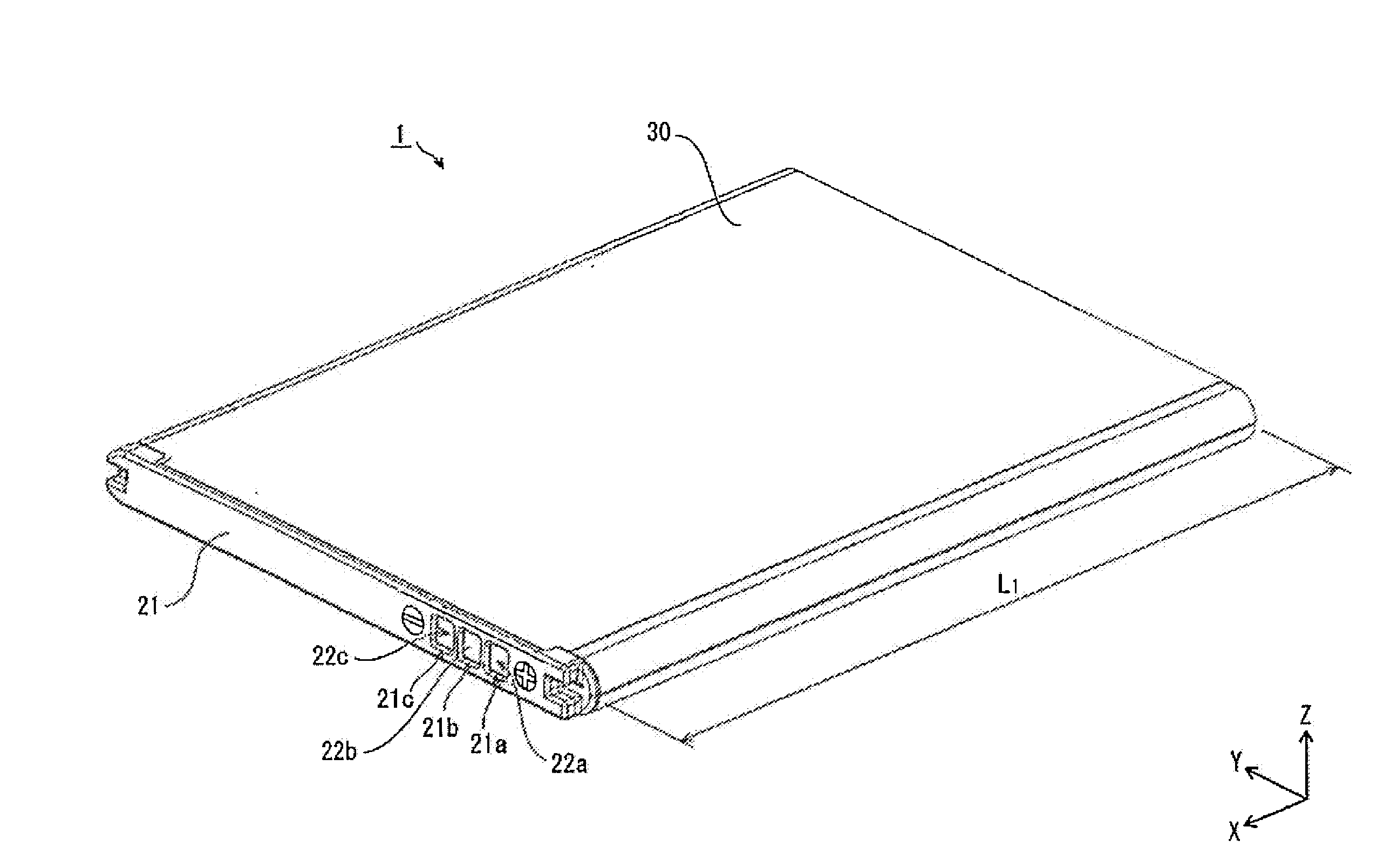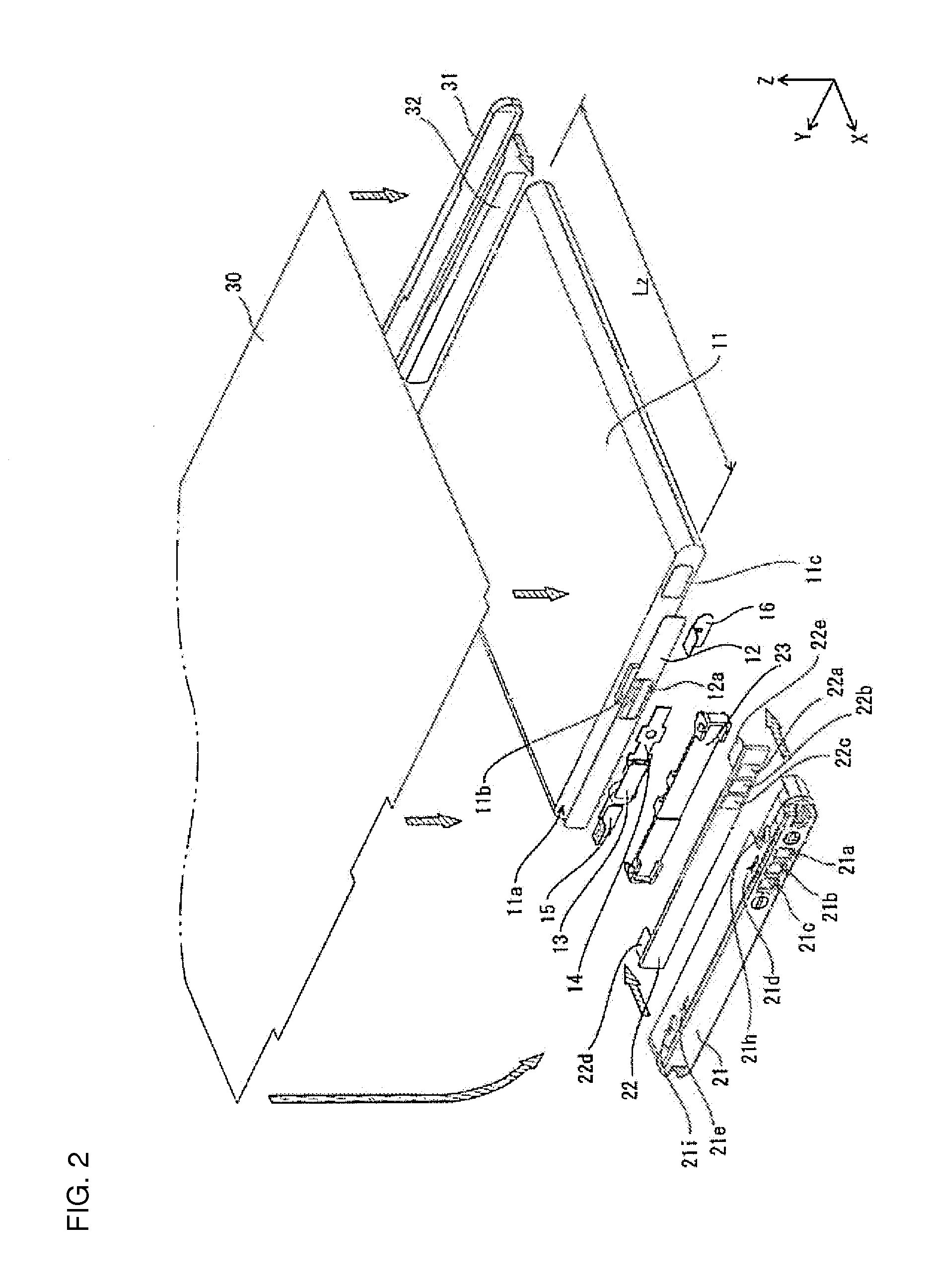Battery pack with precise dimensions
a battery cell and precise technology, applied in the field of batteries, can solve problems such as projection deformation and squashing, and achieve the effect of suppressing the effect of variation in battery cell dimensions and high-precision dimensions
- Summary
- Abstract
- Description
- Claims
- Application Information
AI Technical Summary
Benefits of technology
Problems solved by technology
Method used
Image
Examples
first embodiment
1.Battery pack 1 external structure
As shown in FIG. 1, the battery pack 1 for the first embodiment of the present invention has an external structure that includes a cap 21 disposed at the left-front on the X-axis, a bottom cover (not illustrated in FIG. 1) disposed at the right-rear on the X-axis, and an outer label 30 that covers the perimeter surfaces.
The cap 21 is provided with three windows 21a-21c, and external connecting terminals 22a-22c are exposed to the outside through those windows 21a-21c. The outer label 30 also covers part of the perimeter surfaces of the cap 21 and the bottom cover.
2.Battery pack 1 internal structure
As shown in FIG. 2, the battery pack 1 for the first embodiment of the present invention has a battery cell 11 with a flat solid rectangular external shape, and a positive temperature coefficient (PTC) device 13 and circuit board 22 disposed along the battery cell 11 end-plane 11 a at the left-front on the X-axis.
A lead-plate 14 and another lead-plate 15 ...
second embodiment
FIGS. 9 and 10 are used to describe the structure of the battery pack 2 for the second embodiment of the present invention. Here, description of structures common to the battery pack 1 for the previously described first embodiment is abbreviated, and emphasis is placed on the description of elements that are different.
1. Cap unit 40 structure
As shown in FIG. 9, the cap unit 40 for the second embodiment is configured as an assembly of a cap 41 and a circuit board 42 with the circuit board holder eliminated. Specifically, the cap 41 is provided with rectangular holes 41d, 41e, 41f, 41g through the side-wall surfaces. Further, the cap 41 has two projections 41l . . . (only one projection 41l is shown in FIG. 9) on the inside of the cap 41 at both ends along the Y-axis that extend towards the right-front along the X-axis.
The circuit board 42 is provided with two circuit board lead-plates 42d, 42e on a primary surface at the right-front along the X-axis. Further, locking pieces 42f, 42g,...
PUM
 Login to View More
Login to View More Abstract
Description
Claims
Application Information
 Login to View More
Login to View More - R&D
- Intellectual Property
- Life Sciences
- Materials
- Tech Scout
- Unparalleled Data Quality
- Higher Quality Content
- 60% Fewer Hallucinations
Browse by: Latest US Patents, China's latest patents, Technical Efficacy Thesaurus, Application Domain, Technology Topic, Popular Technical Reports.
© 2025 PatSnap. All rights reserved.Legal|Privacy policy|Modern Slavery Act Transparency Statement|Sitemap|About US| Contact US: help@patsnap.com



